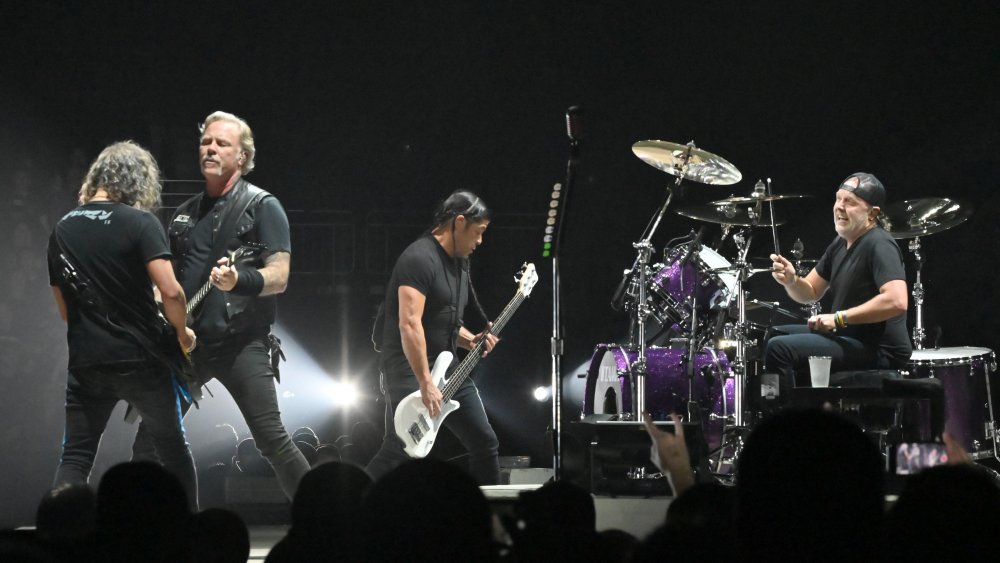How Metallica Was Formed
From a series of colossal records in the golden age of 1980's thrash to the trashcan drums of 2003's experimental album St. Anger, Metallica has been nothing less than iconic, even when at their worst. The metal superstars have left a permanent imprint on music history, and 2016's Hardwired... to Self-Destruct brought their music back to its savage, riffy roots.
Metallica started in Los Angeles in 1981, when vocalist James Hetfield was left bandless after the breakup of his previous group, Leather Charm, according to Ultimate Classic Rock. Until then, Hetfield had been in and out of smaller bands, so he and bassist Ron McGovney were on the lookout for new bandmates. Los Angeles was full of aspiring musicians, nearly all of whom used private ad publication The Recycler to search for each other. It was there that they found an ad reading, "Drummer looking for other metal musicians to jam with. Tygers of Pan Tang, Diamond Head and Iron Maiden." This ad had been placed by Lars Ulrich, a Danish national and son of a wealthy, professional tennis-player. Ulrich had moved to Newport Beach at age sixteen, and was heavily interested in what he defined as "new wave heavy metal."
Ulrich's first meeting with Hetfield and McGovney apparently went terribly. The two considered Ulrich out-of-touch, and not that good at drums. Ulrich wouldn't take no for an answer, though. He and Hetfield eventually connected on a personal level, as "loners," Ulrich states. The two have remained Metallica's backbone ever since.
The troubled demo and bandmate changes
The group got their name when Ulrich drove up to San Francisco for a kegger, according to Metalheadzone. An acquaintance wanted to start a metal-themed magazine, and was choosing between two names — Metal Mania and Metallica. Ulrich suggested he use Metal Mania, because he wanted to keep Metallica for himself.
Metallica traveled around LA doing cover songs of obscure European bands that Ulrich knew about, or covers of American punk bands like the Misfit's "Last Caress." The band stuck to covers because they weren't confident in their own writing, and since the songs were often completely unknown, as Hetfield explained in an interview with Howard Stern, no one noticed. When they recorded their 7-song demo No Life' Til Leather in 1982, they didn't have much personal material except long, epic tracks that were totally different to what scout Kenny Kane had seen them play in concert, according to Ultimate Classic Rock. Kane wanted them to refine their sound, and demo songs like "Seek and Destroy," and "Metal Militia," became the compass by which Metallica honed their brutal sound.
It was in 1983, after taking on bassist Cliff Burton and current guitarist Kirk Hammond, that Metallica recorded their first, full-length album, Kill 'Em All. The group earned an ardent, militant following, and the rest, as they say, is history.

